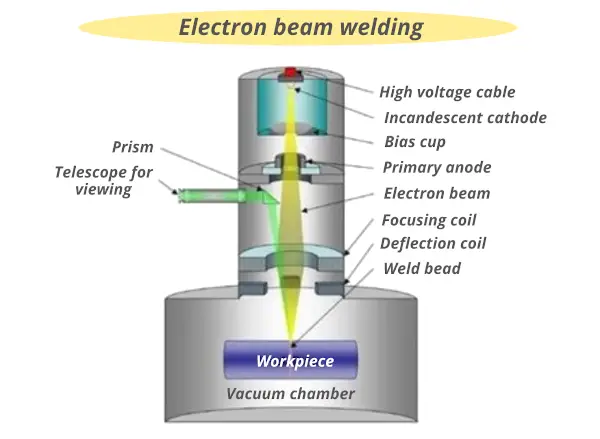As technology continues to advance, industries such as aerospace, automotive, and medical are constantly seeking new and improved ways to achieve greater precision and efficiency in their manufacturing processes. One such technology that has emerged as a leader in this pursuit is laser beam welding (LBW).

What is Laser Beam Welding?
LBW is a welding technique that uses a concentrated beam of light to join pieces of metal or thermoplastics. The laser provides a high-energy heat source, which can be precisely controlled to achieve narrow and deep welds. The narrowness of the weld minimizes heat input, reduces the possibility of thermal distortion, and increases the welding speed.
How Does Laser Beam Welding Work?
The laser beam is focused onto the workpiece, creating a keyhole, which is a narrow, deep hole in the material. As the beam moves along the joint, the keyhole follows and vaporizes the metal or thermoplastic material. The vaporization process creates a cavity or void that the beam can penetrate, resulting in a deep and narrow weld.
Advantages of Laser Beam Welding
1. Precision
Laser beam welding offers unmatched precision, making it ideal for industries where accuracy is vital. The technology allows for greater control of the heat input, ensuring that the welded joints are precise and free from defects.
2. Speed
Laser beam welding is a high-speed joining process. Compared to traditional welding methods, LBW can achieve up to 10 times faster welding speeds, resulting in greater productivity and reduced manufacturing costs.
3. Quality
The precision of laser beam welding also results in high-quality welds. The narrowness of the weld leads to reduced heat input, which means that the fabricated part experiences less deformation or distortion. This results in less part rework or post-processing, reducing the overall manufacturing time.
4. Flexibility
Laser beam welding can be used to weld a wide range of materials, including metals and thermoplastics. Additionally, the process can be used in both high and low production volumes, making it suitable for a wide range of applications.
5. Reduced environmental impact
Laser beam welding has a relatively low environmental impact compared to traditional welding techniques. The process consumes less energy, resulting in reduced greenhouse gas emissions.
Applications of Laser Beam Welding
Laser beam welding is widely used in various industries, including aerospace, automotive, defense, electronics, medical, and telecommunications. The technology’s precision, speed, and flexibility make it ideal for welding components with small tolerances, such as medical devices, sensors, and microelectronics.
Conclusion
Laser beam welding is a crucial technology in precision joining applications. The technique’s high precision, speed, quality, and flexibility have made it a popular choice in various industries. As laser technology continues to evolve, so will the capabilities of laser beam welding, ensuring its place as a leading welding technology for the future.